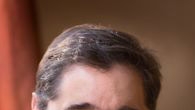Industry awaits FCC decision on cable ownership ruling
FCC Chairman Julius Genachowski must decide whether to appeal a federal appeals court ruling on cable ownership limits.
Now that a federal appeals court has thrown out FCC rules blocking cable TV from serving more than 30 percent of the nation’s subscribers, the ball is in the court of FCC Chairman Julius Genachowski. The decision of whether to appeal will be perhaps his biggest decision to date as new leader of the FCC.

The U.S. appellate court’s decision to reject the cable ownership limit came at a turbulent time in the TV media business. The ownership cap, first set in 1992 and adopted again in 2007 under Republican FCC Chairman Kevin Martin, was “arbitrary and capricious,” the court said. “The commission has failed to demonstrate that allowing a cable operator to serve more than 30 percent of all cable subscribers would threaten to reduce either competition or diversity in programming,” the court said in the ruling.
The court noted that competition among video providers has intensified since the commission set the limit. Satellite providers, including DIRECTV and Dish Network, and telco providers, including Verizon and AT&T, are now in the game. ”Cable operators, therefore, no longer have the bottleneck power over programming that concerned the Congress in 1992,” the court said.
However, as television quickly migrates to the Internet, and the poor economy drives thousands of former pay-TV subscribers to seek free or low-cost services, even the major competitors are in jeopardy. Many are scrambling to deal with the new challenges.
Comcast, which has a 25 percent share of the market and sued to block the FCC’s limitation, won its case. It was not the first time the courts have thrown out the FCC’s attempts to limit cable growth. It has happened twice before, and Comcast knew it had a good chance of winning.
Two years ago, under FCC Chairman Martin, the same cap was reinstated, prompting the new challenge from Comcast. In this attempt, the FCC sought to justify the cap by recalculating its formula, though the 30 percent limit remained the same.
The professional video industry's #1 source for news, trends and product and tech information. Sign up below.
The court noted that in its 2001 rejection of the same cap, it had instructed the FCC to consider competitors to cable. “The commission nonetheless failed to heed our direction, and we are again faced with the same objections to the rationale for the cap,” the court said.
Genachowski said the FCC staff is reviewing the ruling and the commission will decide later what action to take. However, Republican Commissioner Robert M. McDowell noted that he had disagreed with Martin’s decision to reestablish the 30 percent cap in 2007.
The ownership cap was based on “aging data and questionable assumptions” that didn’t adequately reflect today’s competition in the marketplace, McDowell said.
If the FCC decides not to appeal, the ruling will allow major cable providers to purchase smaller competitors to grow their companies.
“We are pleased the D.C. Circuit Court has vindicated our position,” said Sena Fitzmaurice, Comcast’s executive director for corporate communications and government affairs. “This important decision affirms that rules must reflect the changing realities of the dynamic video marketplace, where today consumers have more choice in video providers and channels than ever before.”
